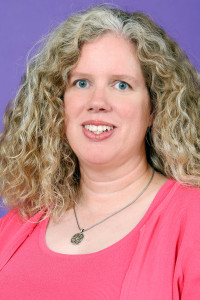According to the TCU Koehler Center website, distance education is defined as “any for-credit internship, clinical, practicum, online course delivered via video-conferencing provided to a TCU student inside or outside the State of Texas.” While distance education started out as classes delivered entirely online to students who are not physically present, many professors nationwide are now using some sort of “blended” or “hybrid” model. That is, they are blending the best practices of teaching in the classroom with technology to expand the conversation outside of the classroom. Distance education can be thought of as a continuum.
On one end is purely online education, where students and faculty never meet and all class interaction is done via computer. On the other end is a class that meets in a traditional classroom space and might use online tools to supplement the discussion. Here at TCU, we have faculty on all points of the spectrum. TCU supports five (5) fully online graduate programs delivered by the Harris College of Nursing and AddRan College of Liberal Arts, all at the graduate level. There are currently 84 courses at TCU that are delivered online, serving 380 students. However, most of the distance education falls in the blended or hybrid space. One way to offer a blended approach, which is used by many professors here, is the use of Pearson LearningStudio to supplement the class. Some professors use it minimally, only posting grades but many are using it to add content and options, such as videos, to their classes. When LearningStudio was introduced to TCU in 2002, 162 class sections were using it. Currently 3,778 TCU class sections are found on LearningStudio, reaching 9,892 students—virtually all of the TCU student population.
I am interested in helping the TCU community explore the ways in which distance education can be employed to create a more engaging classroom experience for students. Often professors will avoid using technology to expand the classroom because they worry it will be either too difficult or that it will be distracting for students. However, there are some great ways to use technology that are neither difficult nor distracting. I want introduce several methods that are currently being used by professors at TCU and that can be adapted to work for most classes. One method of distance education that is becoming more popular is the “flipped classroom.” A flipped classroom is based on moving traditional lecture content online and asking students to watch the lecture videos before the class. When they come to class they are able to spend their time together solving problems and engaging in experiential learning.
Some professors at TCU are using a modified flipped approach. That is, they are putting an introduction lecture video online and using that to start class discussion. Sean Atkinson, Assistant Professor in The School of Music, is using a modified approach. He makes some short videos (typically about 5 minutes long) that he uploads to YouTube and has students watch the video before class. He likes this approach because it frees up class time for activities, and it allows students to pause, rewind, and watch again. He says this process allows students to “process at their own pace, not beholden to the pace of the class.” One neat thing about using YouTube is that you can gather metrics on how many students are watching videos. He gives quizzes at the start of class to make sure students are watching the videos and to reinforce content.
Curby Alexander, Assistant Professor of Professional Practice in The College of Education, is expanding the classroom space in several interesting ways using Google tools. He uses Google Hangouts on Air for exam review sessions. Students can enter the space and connect in real time, or they can watch a recorded session later, at their convenience. The really neat thing about Google Hangouts on Air is that you can create an “index” of questions so that students can click on a particular question and it will jump to the place in the video where it was answered. He also uses Google Forms and EdPuzzle to put content online. He uses Google Forms to post a reading assignment and comprehension questions to be completed before class. He uses EdPuzzle to post a video with embedded questions. While the questions are pretty simple, they allow him to track who is doing the work, and he posts their progress to leaderboards to give them feedback. He says, “This has been helpful in putting some students who thought I wasn’t paying attention on the right track.”
Twitter is another popular tool that many professors, including Sean and Curby, are using to continue the class conversation. I have used Twitter for several years with success. I have students find articles related to class concepts and tweet about them. They are also required to read and respond to their classmates’ tweets. I find that students who are generally quiet in class are much more likely to participate in a Twitter conversation, and students are generally happy with the experience.
We have so many tools at our disposal to create educational opportunities for our students! If you think you might want to try some type of distance education, there are several steps you can take:
- Reach out to the Koehler Center. They have experts in the area that would happy to help you set up a course, give you tips for getting started, and provide you resources for support.
- Sign up for a TLC – there are a variety of Teaching Learning Conversations are focused on technology and/ or distance education.
- Contact me at t.rockett@tcu.edu.
 This article was written by Tracey Rockett, Department of Management, Entrepreneurship, and Leadership, and 2015 Koehler Center Fellow for Distance Education for the Spring 2015 Issue of Insights Magazine.
This article was written by Tracey Rockett, Department of Management, Entrepreneurship, and Leadership, and 2015 Koehler Center Fellow for Distance Education for the Spring 2015 Issue of Insights Magazine.